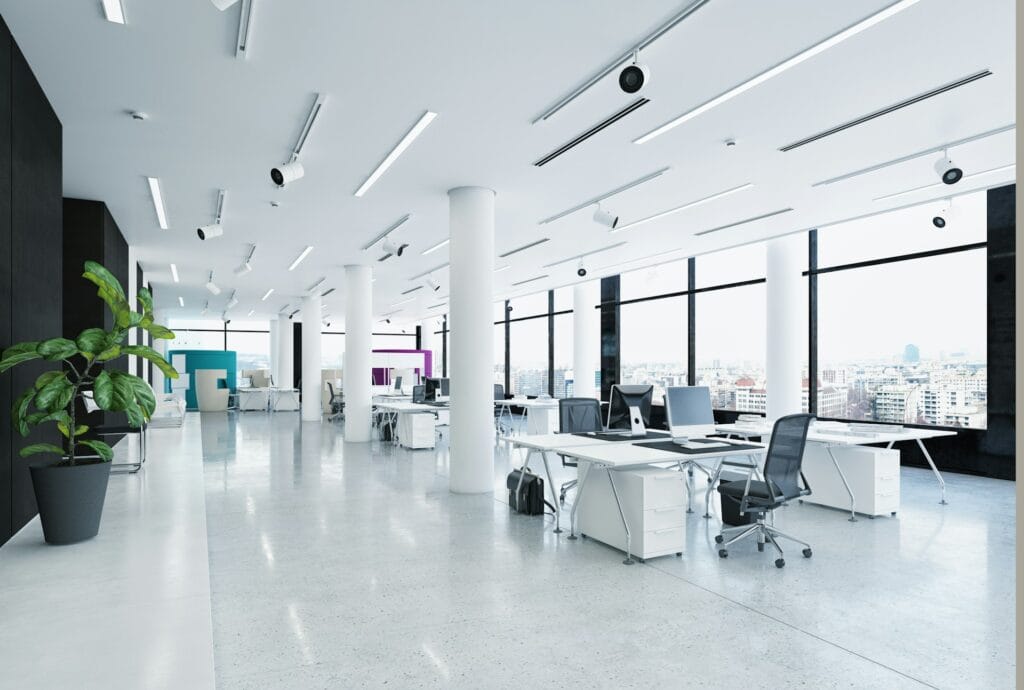Design plays a huge role in how coworking spaces feel and function. These spaces have grown beyond basic office setups. They are now crafted to boost creativity, encourage communication, and improve productivity. Implementing thoughtful design can make these spaces inspiring and welcoming for everyone using them. A well-designed coworking space not only attracts users but also keeps them engaged and motivated day after day.
The concept of creative coworking spaces blends design with practicality. This approach ensures everyone has a productive environment where they can thrive. Such spaces blend sophisticated aesthetics with the needs of the modern worker, providing various work zones and innovative setups. By introducing diverse elements into these spaces, individuals can experience a setting that energises their work, while providing flexibility to adapt to various tasks.
The Importance of Aesthetics
Visual appeal in a workspace can greatly influence your mood and productivity. Imagine heading to work in a drab, cluttered office. It’s not very inspiring, is it? In contrast, a coworking space with vibrant colours, comfortable furniture, and natural light can lift your spirits as soon as you enter. Here are some ways aesthetics enhance coworking environments:
– Visual Engagement: A visually engaging environment sparks curiosity and stimulates creative thinking. From artworks to thoughtful architecture, these elements work together to make the space engaging.
– Mood Enhancement: Colour schemes are key in setting the tone of a workspace. Soft blues and greens can help create a calming atmosphere, while brighter colours like yellow can spark energy and optimism.
Besides adding visual appeal, good design makes the environment more enjoyable. This is where functionality merges with creativity to craft spaces that foster collaboration and independent work. The aesthetics aren’t just about looking good. They serve a purpose by creating a harmonious environment where everyone feels at ease. This balance between beauty and function results in spaces where people are refreshed and inspired, making it easier to tackle daily tasks with enthusiasm.
Functional Design Elements
A coworking space thrives on design elements that are not just attractive but also practical. Consider the role of adaptable and multifunctional furniture. By offering versatility, these pieces can transform the same area from a focused work zone to a vibrant meeting spot. Desks with adjustable heights, modular seating arrangements, and mobile storage units contribute to flexibility and can be easily adjusted to accommodate varying needs throughout the day.
Communal areas play a significant role in encouraging collaboration. These are the spaces where spontaneous interactions can lead to creative breakthroughs. Think of open lounges or breakout spaces furnished with comfy sofas and communal tables. They provide a perfect setting for networking or simply a change of scene to recharge your mind. These areas don’t have to be large, but they should invite people to connect and share ideas.
Environmental Considerations
Bringing nature into the workspace offers more than just nice views. Natural elements can improve air quality and reduce stress. Plants are a simple but effective way to bring greenery indoors, contributing to a healthy and calming atmosphere. Additionally, using sustainable materials for furniture and decor not only benefits the environment but often offers unique textures and styles that enhance the space.
The lighting and acoustics of a workspace significantly affect comfort and efficiency. Natural light is the preferred choice as it helps regulate mood and energy levels. For spaces without ample natural light, adjustable LED lighting can mimic natural patterns throughout the day. Acoustics are equally essential; well-designed soundproofing ensures that workers can concentrate without the distraction of noise from bustling communal areas.
Personalisation and Flexibility
Personalising a workspace makes it feel more like your own. Allowing individuals to decorate or rearrange their personal work areas provides a sense of ownership. This could be as simple as choosing favourite desk accessories or arranging photos. Such personal touches make the space not just more inviting, but genuinely yours.
Flexible layouts cater to various work styles, whether it’s independent tasks or team collaborations. Having spaces that can be easily reconfigured supports an agile work environment. These adjustments cater to changing team sizes or project requirements without drastically altering the setup. This flexibility ensures that everyone finds their ideal spot to be productive and comfortable.
Seamless Integration of Design and Functionality
Creating spaces that perfectly blend design and functionality is an art. It involves considering how each piece of furniture supports both individual focus and group activities, how each light fitting complements both working late and refreshing during midday breaks. Such a thoughtful design approach can lead to workplaces that are both effective and enjoyable to be in.
Innovative features and thoughtful layouts bring life to coworking spaces, shaping them into more than just physical environments. These spaces become communities where people feel encouraged to work in ways that suit them best, promoting a thriving and cohesive work culture. Adjustments in design that cater to individual and collective needs make all the difference in creating an atmosphere that’s not only productive but also enriching.
Explore how creative coworking spaces can transform your work experience by integrating innovative design and functionality. The Workers’ League offers an ideal setting for creativity and productivity, whether you’re looking for adaptable meeting rooms or engaging communal areas. Learn more about the benefits of creative coworking spaces and how they support different work styles.
